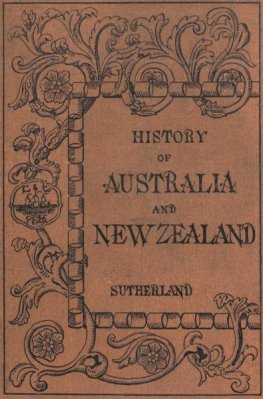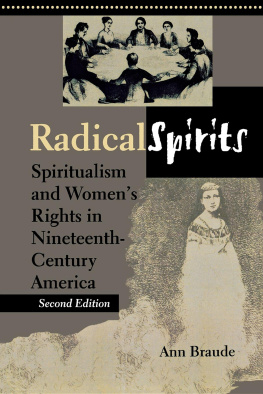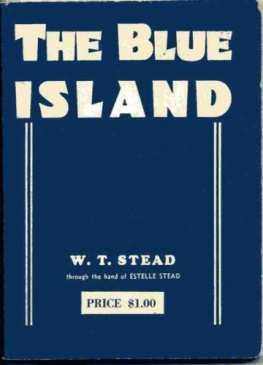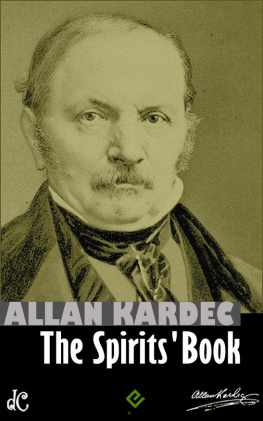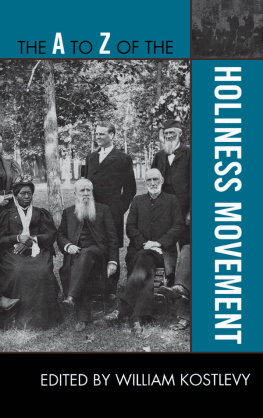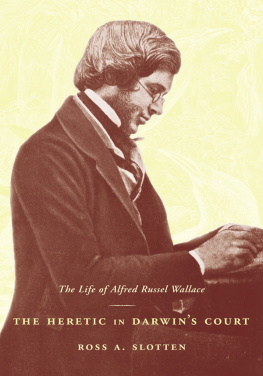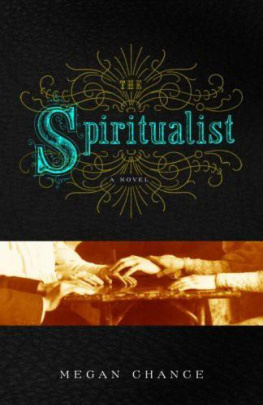Messages from Beyond
Spiritualism and Spiritualists
in Melbournes Golden Age
18701890
Alfred J. Gabay
MELBOURNE UNIVERSITY PRESS
MELBOURNE UNIVERSITY PRESS
PO Box 278, Carlton South, Victoria 3053, Australia
info@mup.unimelb.edu.au
www.mup.com.au
First published 2001
Text Alfred Gabay 2001
Design and typography Melbourne University Press 2001
This book is copyright. Apart from any use permitted under the Copyright Act 1968 and subsequent amendments, no part may be reproduced, stored in a retrieval system or transmitted by any means or process whatsoever without the prior written permission of the publisher.
Printed in Australia by Australian Print Group
National Library of Australia Cataloguing-in-Publication entry
Gabay, Alfred J., 1946-.
Messages from beyond: spiritualism and spiritualists in Melbournes golden age
18701890.
Bibliography.
Includes index.
ISBN 0 522 84910 5.
1. SpiritualismVictoriaMelbourneHistory19th century. 2. SpiritualismHistory. I. Title.
133.9
For Simone
Illustrations
The Fox sisters
William H. Terry
Hugh Junor Browne
Professor William Denton
Victoria Woodhull
(from Barbara Goldsmith, Other Powers: The age of suffrage,
spiritualism and the scandalous Victoria Woodhull, New York 1998)
Alfred Deakin
(National Library of Australia)
Mrs Annie Bright
James Smith
Masthead, Harbinger of Light
Thomas Walker
D. D. Home and accordion experiment
(from William Crookes, Researches in Spiritualism, London, n.d.)
D. D. Home and balance experiment
(from William Crookes, Researches in Spiritualism, London, n.d.)
Full materialization
Illustrations are from Harbinger of Light unless otherwise acknowledged.
Acknowledgements
I WISH TO EXPRESS my deep appreciation for the assistance and encouragement I have received from many quarters in the preparation of this study. Firstly, my thanks to Dr John Hirst, who set me on this path of research, and to Dr F.. Smith, whose pioneering work in this area of Australian intellectual history still sets the standard. I am indebted to my colleague Dr Roger Sworder, who read and provided sound comments on the manuscript, and to Carole Gabay and Kaye Bignell, who have been supportive as friends and helpful with research. I am grateful also to Teresa Pitt and Melbourne University Press, for their interest in the project, and to the Victorian Spiritualists Union, the Swedenborg Library, Bryn Athyn, Pa., and the Society for Psychical Research, London, who have all generously made available rare source material which has benefited this study immeasurably. My deepest gratitude is to my family, especially Cherry and Darwin, whose love, understanding and continuing support have been my source of inspiration.
INTRODUCTION A New Dispensation?
O N AN EARLY SPRING EVENING in March 1848 John Fox, a farmer, and his wife Margaret prepared to retire early after putting their two young daughters to bed. As this prosaic scene unfolded this simple, God-fearing couple residing in rustic Hydesville, an isolated community in the upstate New York township of Arcadia, could not have suspected that the events transpiring around them would soon catapult their family to a sudden and unexpected notoriety, and eventually give rise to a new religion.
The nocturnal bangs and raps emanating from various parts of the small cottage that had interrupted their slumber regularly over the three months since they moved in, ceased to be merely frightening annoyances when 12-year-old Kate, the younger of the soon-to-be celebrated Fox sisters, hit upon the idea of attempting to communicate with the author of these disturbances. She snapped her fingers, whereupon the raps imitated her; later she held up her fingers, and an equal number of raps was given. To everyones great surprise, they began to communicate via a code of one rap for yes, and two for no, and in a later extension of this method, words would be spelled out by raps being sounded at the appropriate letter as the alphabet was recited aloud. Thus the alleged intelligence not only responded to questions, but now also volunteered information purporting to be about himself and the manner in which he had met his death. The entity claiming responsibility for the raps declared that he was the spirit of one Charles B. Roena, a pedlar who had been murdered in the house some four or five years earlier. He stated that his body was buried underneath the floorboards of the house.
Neighbours were called in, and soon news about these strange phenomena began circulating throughout the region. A preliminary digging was abandoned when flooding occurred, and later investigations proved inconclusive. No less than three committees of inquiry were formed by responsible citizens in nearby Rochester. The first meeting, held on 14 November 1849 at the Corinthian Hall, featured the principal speaker, Mr Capron of Auburn, one of the witnesses to the original rappings, who gave an exposition of the facts. A committee of citizens, charged with examining the girls, was then selected. Their examination was thorough, if somewhat humiliating.
The committee of ladies, appointed without notice, disrobed the frightened girls, who wept bitterly under their afflictions, insisting that neither of them should leave the room. Their dresses were tied tightly round their ankles as they stood upon pillows surmounting a glass surface concealed under the carpet, in order to interrupt electric vibrations. The committee was forced to report, much to the disgust of local sceptics, that they could find no trace of imposture in these happenings: when they were standing on pillows with a handkerchief tied round the bottom of their dresses, tight to the ankles, we all heard the rapping on the wall and floor distinctly.
The Foxes were censured by their local Methodist Church. Another inquiry was held in December 1850 by Professors Flint, Lee and Coventry of Buffalo University. Their conclusion, that the raps were fraudulent and were caused by cracking of the girls knee-joints, soon brought much controversial publicity to the new movement beginning to emerge throughout western New York from these isolated phenomena. Horace Greeley, following a series of sances with the Fox sisters held in his home, wrote in his New York Tribune :
Our own dwelling was among those... visited; [the Foxes] not only submitting to, but courting, the fullest and keenest inquiry with regard to the alleged manifestations from the spirit-world, by which they were attended... it would be the basest cowardice not to say that we are convinced beyond a doubt of their perfect integrity and good faith in the premises. Whatever may be the origin or cause of the rappings, the ladies in whose presence they occur do not make them. We tested this thoroughly and to our entire satisfaction.
Thus two related trends were developing: the startling claim of an ability to communicate across the veil of death, and perhaps more startling yet, the introduction of a new yet ancient office of mediator between gods and men, formerly filled by the pythonesses and the vestal virgins of the Ancient world, but now through two adolescent girls with no discernible training or even inclination to matters supernatural. It was, in effect, the advent of a popularization and secularization of the role of mediator between the human world and a putative greater Reality.


